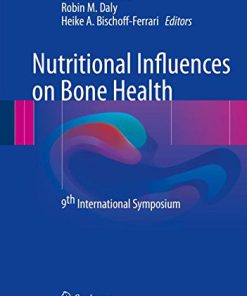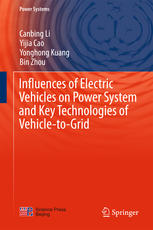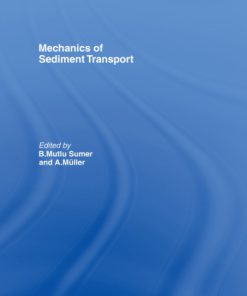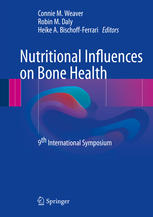Sediment Provenance Influences on Compositional Change from Source to Sink 1st Edition by Rajat Mazumder ISBN 012803386X 978-0128033869
$50.00 Original price was: $50.00.$25.00Current price is: $25.00.
Sediment Provenance Influences on Compositional Change from Source to Sink 1st Edition by Rajat Mazumder – Ebook PDF Instant Download/Delivery: 012803386X , 978-0128033869
Full download Sediment Provenance Influences on Compositional Change from Source to Sink 1st after payment

Product details:
ISBN 10: 012803386X
ISBN 13: 978-0128033869
Author: Rajat Mazumder
Dr. Rajat Mazumder received his M.Sc in Applied Geology in 1991 from the University of Allahabad, (India) and his Ph.D from Jadavpur University (India) in 2002. He was a Post-doctoral Fellow of the Japan Society for the Promotion of Science (JSPS) at Yokohama National University (2002-2004), Alexander Von Humboldt Foundation (2005-2006) at Munich University, Germany, and was a recipient of JSPS short-term invitation fellowship for experienced researchers in 2008. Dr. Mazumder taught Sedimentary Petrology, Mineralogy and Precambrian Stratigraphy at Asutosh College (University of Calcutta, 1999-2002), Indian Institute of Technology Roorkee (2006), and was an Associate Professor of Geology at the Indian Statistical Institute (2006-2013). He was a Research Fellow at the University of New South Wales Australia (2012-2014). Currently, Dr. Mazumder is an Associate Professor at Curtin University Sarawak, Malaysia and teaches Basin Analysis and Petroleum Systems, Tectonics and Dynamic Earth and Metamorphic Petrology. Dr. Mazumder was one of the global co-leaders of UNESCO-IGCP 509 research project (2005-2009) on the Paleoproterozoic Supercontinent and global evolution. He is an advisory editor of the Journal of the Geological Society of London and an Associate Editor of Marine and Petroleum Geology. His research is mostly focused on the earth’s surface processes during its early history.
Sediment Provenance Influences on Compositional Change from Source to Sink 1st Table of contens :
Chapter 1. Sediment Provenance: Influence on Compositional Change From Source to Sink
Chapter 2. Evolution of Siliciclastic Provenance Inquiries: A Critical Appraisal
1. Introduction
2. Purpose and Scope
3. Materials and Relevant Properties
4. Investigative Techniques and Insightful Results
5. The Critique
6. Discussion
7. The Future
8. Conclusions
Chapter 3. Tracing the Source of the Bio/Siliciclastic Beach Sands at Rosa Marina (Apulian Coast, SE Italy)
1. Introduction
2. Setting of the Study Area
3. Methods
4. Characteristics of the Beach Sand and Older Units
5. Marine Life Forms Contributing to the Beach Sand
6. Conclusions
Chapter 4. Changes in the Heavy-Mineral Spectra on Their Way From Various Sources to Joint Sinks: A Case Study of Pleistocene Sandurs and an Ice-Marginal Valley in Northwest Poland
1. Introduction
2. Geographical Setting
3. Methods
4. Heavy-Mineral Spectra
5. Discussion
6. Conclusions
Chapter 5. Reconstructions of Paleohydraulic Conditions From Primary Sedimentary Structures: Problems and Implications for Sediment Provenance
1. Introduction
2. Entrainment and Transportation
3. Bed Form Stability
4. Estimation of Paleohydraulic Parameters From Different Structures
5. Randomness of Experimental Results
6. Discussion and Conclusions
Chapter 6. Physico-Chemical Characteristics of the Barremian-Aptian Siliciclastic Rocks in the Pondicherry Embryonic Rift Sub-basin, India
1. Introduction
2. Geological Background
3. Methodology
4. Facies Analysis
5. Sandstone Petrography
6. Geochemistry
7. Conclusions
Chapter 7. Petrological and Geochemical Constraints on Provenance, Paleoweathering, and Tectonic Setting of Clastic Sediments From the Neogene Lambir and Sibuti Formations, Northwest Borneo
1. Introduction
2. Sedimentological Considerations and Tectonics
3. Methodology
4. Results
5. Discussion
6. Conclusions
Chapter 8. What Are the Origins of V-Shaped (Chevron) Dunes in Madagascar? The Case for Their Deposition by a Holocene Megatsunami
1. Introduction
2. Background
3. Sample Selection and Processing
4. Sedimentary Characteristics of Chevron Sands
5. Characteristics of Individual Chevrons
6. Ampalaza Chevron
7. Discussion of Madagascar Chevrons
8. Geochronology
9. Origin of the Madagascar Chevrons Investigated Here
10. Other Modern Tsunami Deposits: Mixtures of Carbonate-Rich Sand and Large Rocks
11. Suggestions for Further Work
Appendix 8.1: Weight Percentage Data of Different Grain Sizes Used to Calculate Grain Size Parameters in Table 8.2
Chapter 9. The Contourite Problem
1. Introduction
2. Global Thermohaline Circulation
3. Deep-Water Bottom Currents
4. Fundamental Contourite Problems
5. Concluding Remarks
Chapter 10. Fluvial Systems, Provenance, and Reservoir Development in the Eocene Brennan Basin Member of the Duchesne River Formation, Northern Uinta Basin, Utah
1. Introduction
2. Geological Context
3. Regional Sedimentary Facies of the Brennan Basin Member
4. Method
5. Sandstone Composition and Paleocurrents
6. Petrography
7. Synthesis of Paleodrainage Model
8. Discussion
9. Conclusions
Chapter 11. Changes in the Shape of Breccia Lenses Sliding From Source to Sink in the Cambrian Epeiric Sea of the North China Platform
1. Introduction
2. Geological Setting
3. The Breccia Lenses
4. Genetic Interpretation of the Lenses and Their Shapes
5. Change of Shape During and After Sliding
6. Discussion
Chapter 12. Provenance of Chert Rudites and Arenites in the Northern Canadian Cordillera
1. Introduction
2. Lithology and Sedimentology
3. Petrography
4. Zircon Geochronology
5. Interpretation
6. Discussion
7. Conclusions
Chapter 13. Late Neoproterozoic to Early Mesozoic Sedimentary Rocks of the Tasmanides, Eastern Australia: Provenance Switching Associated With Development of the East Gondwana Active Margin
1. Introduction
2. Geological Setting and Subdivisions of the Tasmanides
3. Provenance
4. Discussion
5. Conclusions
Chapter 14. Utility of Detrital Zircon Grains From Upper Amphibolite Facies Rocks of the Grenville Supergroup, Adirondack Lowlands, Northeastern United States
1. Introduction
2. Geological Setting
3. Analytical Methods
4. Results
5. Discussion
6. Conclusions
Chapter 15. Detrital Zircon U-Pb Geochronology, Nd Isotope Mapping, and Sediment Geochemistry From the Singhora Group, Central India: Implications Toward Provenance, Its Shift, and Regional Stratigraphic Correlation
1. Introduction
2. Geological and Geochronological Background
3. Sample Description
4. Analytical Method
5. Results
6. Discordance in U-Pb Isotopic Values
7. Discussion
8. Conclusion
Chapter 16. Deciphering Sedimentary Provenance and Timing of Sedimentation From a Suite of Metapelites From the Chotanagpur Granite Gneissic Complex, India: Implications for Proterozoic Tectonics in the East-Central Part of the Indian Shield
1. Introduction
2. Regional Geology
3. Sample Description
4. Analytical Methods, Zircon Morphology, and Results
5. Discussion
Chapter 17. SEM-CL Fabric Analysis of Quartz Framework Population From the Mesoarchean Keonjhar Quartzite From Singhbhum Craton, Eastern India: Implications for the Understanding of the Upper Continental Crust
1. Introduction
2. Geologic Background
3. Materials and Methods
4. Results
5. Discussion
6. Conclusions
Chapter 18. Provenance of Detrital Pyrite in Archean Sedimentary Rocks: Examples From the Witwatersrand Basin
1. Introduction
2. Provenance of Detrital Pyrite
3. Stability of Detrital Pyrite and Its Preservation Potential
4. Tools to Study Detrital Pyrite in Sedimentary Rocks
5. Case Study: The Witwatersrand Basin
6. Conclusions
Chapter 19. Ice Ages in Earth History: Puzzling Paleolatitudes and Regional Provenance of Ice Sheets on an Evolving Planet
1. Introduction
2. Diagnostic Characteristics of Glacial Deposits
3. Changes Between Source and Sink
4. Glaciations and Continental Drift
5. Paleomagnetic Puzzles
6. Unusual Rock Associations
7. The Cryogenian Conundrum
8. The Barren or Boring Billion
9. Early Proterozoic Glaciations: The Huronian Glacial Event
10. Archean Glacial Deposits
11. Why did Sporadic Glaciations Occur?
12. Snowball Earth Versus High Obliquity
13. Glaciations, Impacts, and Higher Life Forms
14. Summary and Conclusions
Chapter 20. The Isua Supracrustal Belt of the North Atlantic Craton (Greenland): Spotlight on Sedimentary Systems With the Oldest Preserved Sedimentary Structures (∼3.7, ∼3.75, and ∼3.8Ga)
1. Introduction
2. Geology of the Isua Supracrustal Belt
3. ∼3800Ma Metasedimentary Rocks
4. ∼3750Ma Dividing Sedimentary Unit
5. ∼3710Ma Clastic and 3700–3695Ma Chemical Sedimentary Rocks
6. Isua Depositional Environments
7. Conclusions
People also search for Sediment Provenance Influences on Compositional Change from Source to Sink 1st:
sediment provenance analysis
describe sediment
composition of sediments
what determines the composition of sediment particles on a beach
3 sources of sediment pollution
Tags:
Rajat Mazumder,Compositional Change,Sediment Provenance Influences,Source to Sink
You may also like…
Medicine
Nutritional Influences on Bone Health 9th edition by Connie M. Weaver 3319324173 9783319324173
Engineering - Automotive
Earth Sciences
Medicine - Immunology
Environmental Influences on the Immune System 1st Edition Charlotte Esser (Eds.)













